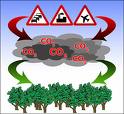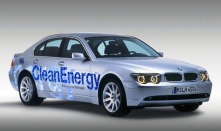Today, the House of Representatives passed the
American Clean Energy And Security Act of 2009 to reduce the United States' greenhouse gas emissions (GHGe) and encourage more renewable energy generation.
This bill will establish a cap and trade system this will place a limit of the amount GHGe manufacturers and energy providers can emit within a year by giving these industries pollution permits or allowances.
The manufacturers and energy providers that exceed their pollution permits can trade pollution permits amongst themselves in order to avoid fines.
The cap on GHGe would increase over the years, which would in turn increase the price of emissions and driving these industries to find cleaner ways of making energy and products.
The bill has a goal of reducing GHGe in the United States to 17 percent below 2005 levels by 2020, and 83 percent by 2050.
In 2005, the United States emitted 7, 256.9 metric tons of carbon dioxide equivalent. In 2007, the United States emitted 7,282.4 metric tons of carbon dioxide equivalent.
This bill is the first real step that the United States has taken to actually address the dangers of climate change. It is by no means a perfect bill with all of its special pork projects, but it does create more momentum for the sustainability movement.
Once we achieve enough momentum, we will be unstoppable just like the Juggernaut. The key to achieve this is to keep up pressure on our government representatives.
We must make sure that Congress and President Obama are designing policies that will encourage more sustainable and renewable energy technologies that will protect God's green earth and allow the citizen's of the United States to lead productive and effective lives.
Download the full bill here and read more here.
|
Energy Secretary Steven Chu said today that the Obama administration's budget will not contain any funding for developing hydrogen powered vehicles. It is Earth Day today!!! |
AuthorI am just a Southern gentleman at UC Berkeley that wants to enable people to live better and be productive citizens. Archives
December 2013
Categories
All
|



 RSS Feed
RSS Feed


